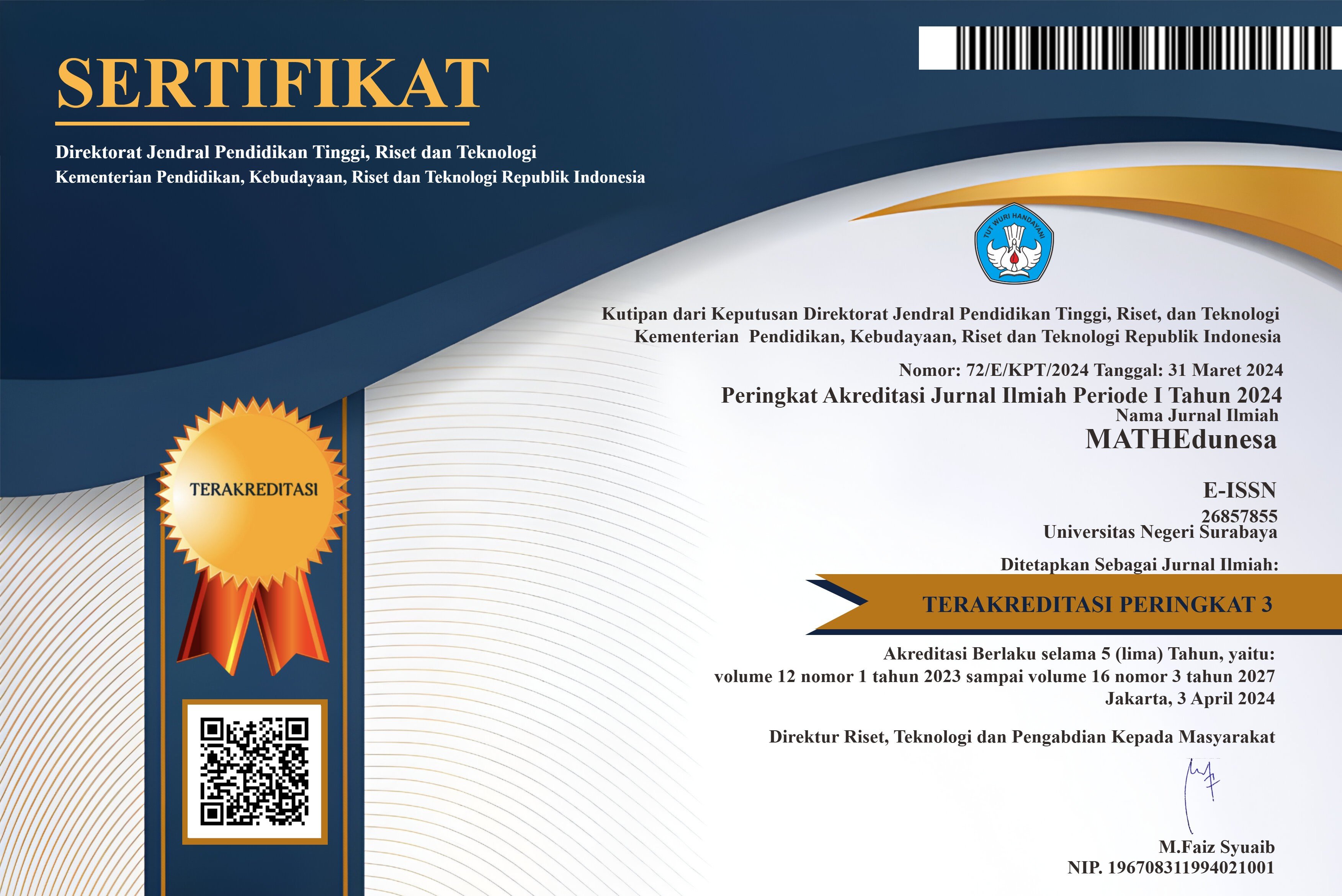Proses Berpikir Kreatif Siswa SMP dalam Menyelesaikan Soal Open Ended Ditinjau dari Kemampuan Matematika pada Materi Segiempat
DOI:
https://doi.org/10.26740/mathedunesa.v13n2.p514-534Abstract
Mathematics is one of the disciplines and is a very important knowledge, especially in today's era of sophisticated technology. Creative thinking is a person's mental activity that produces new ideas that are relatively different from previously held knowledge that is useful for solving a problem at hand. Each student has different mathematical abilities that affect students' creative thinking process in solving math problems. The purpose of this study is to describe the creative thinking process of junior high school students based on high, medium, and low levels of mathematical ability in solving open ended problems on quadrilateral material. This research uses a qualitative approach with descriptive research type. This research was conducted on seventh grade students at Junior High School 2 Kesamben in the even semester of the 2022/2023 school year. Indicators of the stages of the creative thinking process in this study are synthesizing ideas, building ideas, planning the application of ideas, and determining ideas. The results of this study are students with high mathematics ability in (1) synthesizing ideas, namely by understanding, reading the problem two to three times, and identifying what is known in the problem; (2) building ideas, namely by sketching and imagining a rectangular flat shape as a first step to bring up the idea; (3) planning the application of ideas, namely by considering the ease of the method and using alternative ideas; (4) applying ideas, namely by writing down the steps that have been planned. For students with moderate mathematics ability in (1) synthesizing ideas by understanding, reading the problem twice, and identifying what is known in the problem; (2) in constructing ideas, namely by imagining the shape of a rectangular flat shape as a first step to bring up the idea; (3) planning the application of ideas by considering convenience and using alternative ideas; (4) implementing ideas by writing down the steps that have been planned. For students with low mathematics ability in (1) synthesizing ideas by understanding, reading the problem twice; (2) building ideas by imagining and describing the shape of a rectangular flat shape (3) planning the application of ideas carefully because they are sure they can solve the problem; (4) applying ideas by writing down the planned steps.
Downloads
Downloads
Published
Issue
Section
 Abstract views: 98
,
Abstract views: 98
, PDF Downloads: 102
PDF Downloads: 102




